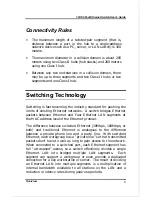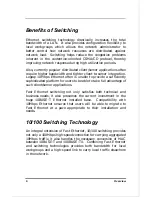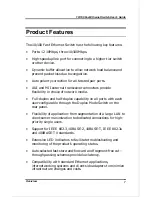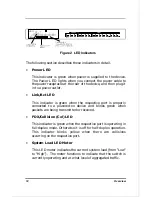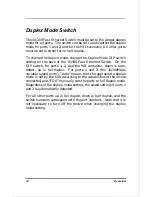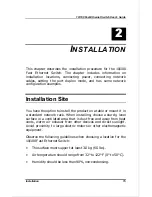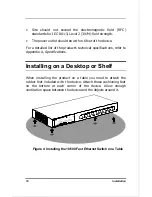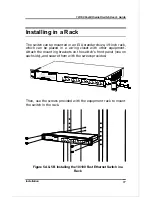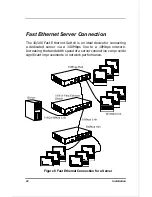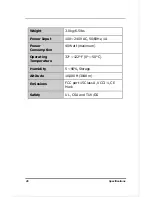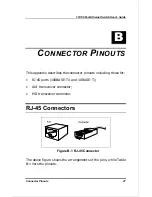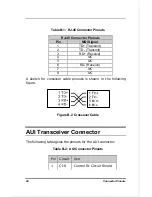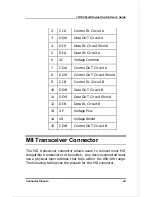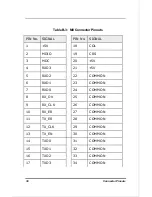
10/100 Fast Ethernet Switch User’s Guide
Installation
19
workstation or a server running at 100Mbps, a standard
100BASE-TX adapter must be installed. When running at
10Mbps, ports 1 and 2 are functionally identical to the 10Mbps
ports described below.
The MII transceiver connector is also a 10/100Mbps port.
External transceivers for a standard Ethernet, Fast Ethernet or a
fiber optic connection will work with the MII connector.
Note:
D-Link also provides the following media
converters that can be used with the MII
connector on this Switch: DFE-853 MII-TX, DFE-
854 MII-FX, DFE-855 TX-FX. The 854 and 855
converters include fiber optic capabilities and
can use fiber optic cables up to 2 km long.
10Mbps Ports
These ports require Category 3, 4, or 5 unshielded twisted-pair or
shielded twisted-pair (UTP/STP) cable. They can be used to
connect to individual workstations, servers or other 10BASE-T
devices. The attached station must be within 100 meters of the
10/100 Fast Ethernet Switch. When connecting a workstation or a
server, a standard 10BASE-T adapter must be installed.
The AUI transceiver connector is also a 10Mbps port. External
transceivers for a standard Ethernet connection (thin or thick)
will work with the AUI connector.
Cable Types
Under most conditions, the ports on the 10/100 Fast Ethernet
Switch may use normal straight-through cables. Some
circumstances, however, may require the use of crossover cables

